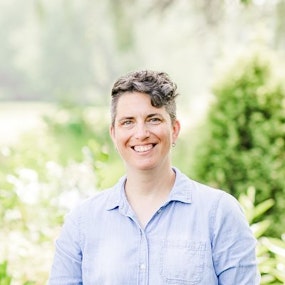ROBERT JOHNSON:
This is Public Health Review Morning Edition for Thursday, July 13, 2023. I'm Robert Johnson. Now today's news from the Association of State and Territorial Health Officials.
ROBIN MATTHIES:
According to the 2021 YRBS data that recently came out, 45% of LGBTQ+ youth seriously considered attempting suicide, versus 15% of their heterosexual peers. And from a national Trevor Project survey, 50% of transgender and non binary youth seriously considered attempting suicide.
JOHNSON:
ASTHO's Robin Matthies on the data that informs a webinar discussion planned next Monday about disparities impacting young people who are part of the LGBTQ+ community.
MATTHIES:
I think these disparities are significant and highlight why we should have prioritized addressing them. And I think a webinar like this gives an opportunity for people to hear some of the data and also to learn more about what one state, in this case Vermont, is doing to address some of these issues that we're talking about.
JOHNSON:
Matthies says there are many things public health leaders can do to help young people who live in their jurisdictions.
MATTHIES:
One of which is becoming more familiar with the data in their state by making sure that the data is, first and foremost, collected, tracked and evaluated, especially data on transgender and non-binary youth, as they are often not included in surveys, especially national surveys.
JOHNSON:
Matthies reminds us that we need to give people with lived experiences, and those that represent them, a voice in policy and program decisions.
MATTHIES:
Create opportunities for LGBTQ+ youth and organizations that support them to have a seat at the table to better ensure their voices are being heard and decisions are being made on their behalf with their voices being heard.
JOHNSON:
You can attend the discussion next Monday, July 17. It begins at 2:00 p.m. ET. Save your seat to the online event using the link in the show notes.
Syphilis cases in Minnesota jumped 25% in 2022, even though other sexually transmitted infections fell slightly. This is Christine Jones with the Minnesota Department of Health.
CHRISTINE JONES:
So, the biggest challenges of slowing down the spread of disease are the health inequities and structural racism and continued patterns of BIPOC and marginalized communities that are being most impacted by STDs and HIV.
JOHNSON:
While Jones says the impact of the pandemic on STI screening and treatment access is unclear, she's certain about one thing: there's a need for more education and testing to counter whatever damage has been done by COVID-19.
JONES:
Educating folks on what STDs and HIV are, what are some of the symptoms they may experience as well as knowing that you may not be experiencing any symptoms, getting regularly tested for STDs and HIV at least once a year for anyone who is sexually active, whether or not you have symptoms is important, and also knowing the prevention options that are out there.
JOHNSON:
You can read more about STIs in Minnesota using the link in the show notes.
Also today, raging floodwaters in Vermont remind us that preparedness is always important. On Monday, July 17, ASTHO will host a webinar about serving people with disabilities during disaster events, drawing on experiences in Guam. You can learn more about the evening event and sign up to attend by visiting the link in the show notes.
Finally, many states are considering whether to certify their community health workers. We've reported previously Louisiana's decision not to pursue certification. Today, O'Keyla Cooper tells us about another jurisdiction that's moving ahead with the process.
O'KEYLA COOPER:
Kentucky has chosen to certify community health workers to improve public health outcomes by connecting health care systems with communities. This decision was made in consultation with community health workers and involved collaboration with community health worker groups in the state. Certification offers benefits such as increased recognition, professional growth and financial sustainability. To learn more about Kentucky's approach and the importance of community health worker certification, read the full blog article. The link is in the show notes.
JOHNSON:
ASTHO also has a blog article about Louisiana's decision to forego certification. Look for that link in the show notes as well.
That'll do it for today's newscast. We're back tomorrow morning with more ASTHO news and information. I'm Robert Johnson. You're listening to Public Health Review Morning Edition. Have a great day.





